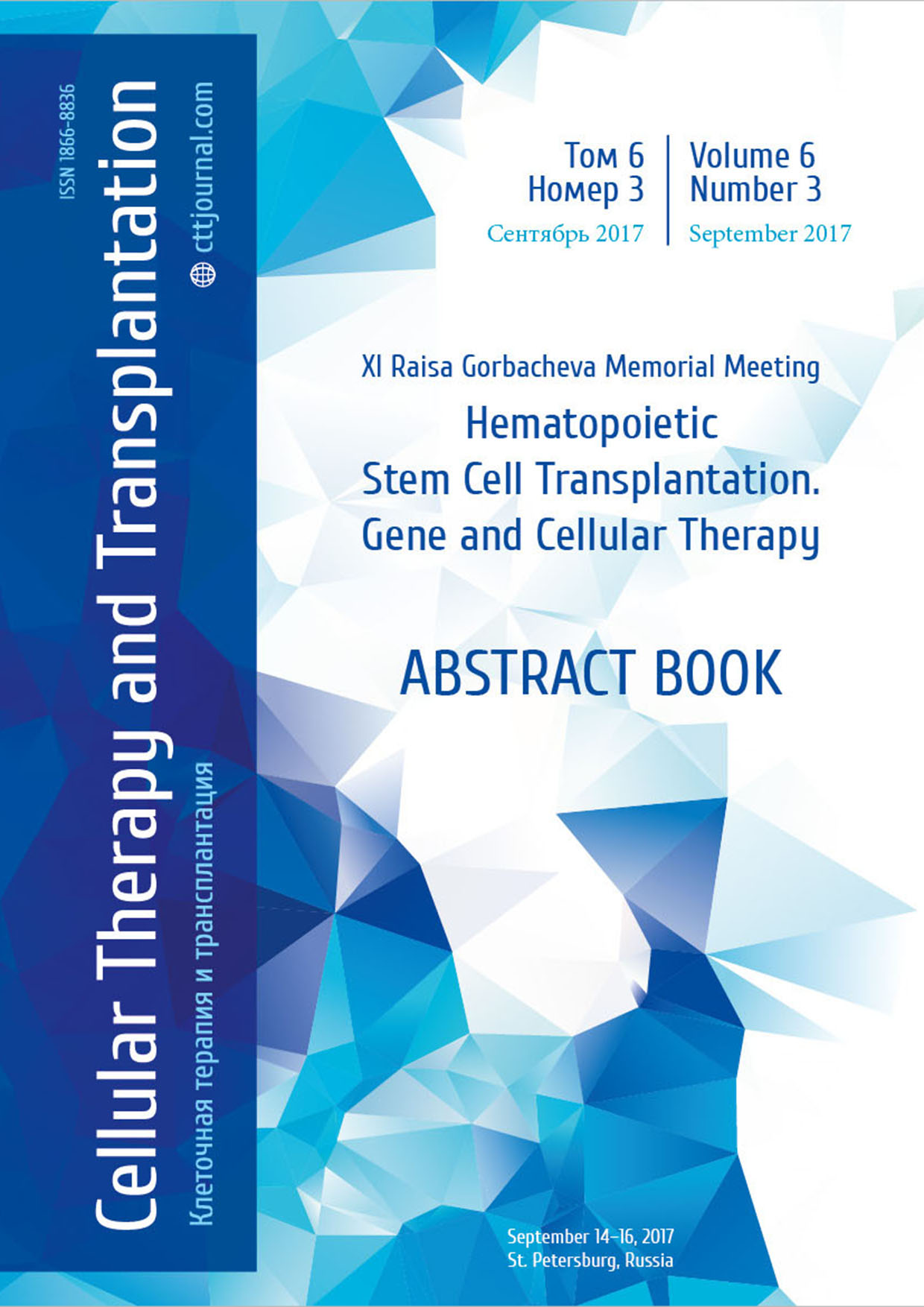Dmitrii E. Pevtcov, Ivan S. Moiseev, Viktoria A. Dubkova, Elena V. Babenko, Maria A. Estrina, Irina I. Kulagina, Olesya V. Paina, Tatyana A. Bikova, Ludmila S. Zubarovskaya, Boris V. Afanasyev
R. M. Gorbacheva Memorial Institute of Oncology, Hematology and Transplantation, Chair of Hematology, Transfusiology and Transplantology, Pavlov First Saint Petersburg State Medical University, St. Petersburg, Russian Federation
Summary
Introduction
Using bone marrow (BM) as the graft source results in lower graft-versus-host disease incidence. Nonetheless achieving adequate CD34+ cell count might be complicated in cases of donor-recipient weight differences. Priming with G-CSF may partly solve this problem. A number of studies were published demonstrating increased CD34+ cell count and faster engraftment. Also there are reports of immunomodulatory effect of BM priming. It is not known if this strategy works with posttransplant cyclophosphamide (PTCy) graftversus-host disease (GVHD) prophylaxis.
Patients and methods
41 consecutive patients with primed BM graft and PTCy-based GVHD prophylaxis were included in the analysis. They were pair-matched 1:1 to non-primed graft recipients also with PTCy-based GVHD prophylaxis. The criteria for matching were type of the donor, age of the recipient, underlying disease and disease status at the time of SCT. There was significant differences between groups in any of the clinical parameters tested (p>0.18). Priming was performed with three injections of filgrastim 5-7 mcg/kg daily for 3 days prior to BM harvesting. Median recipient age was 14 years (range 1-58). 76% of patients received the graft from haplo donor, 24% – from matched related donor. 46% of patients had acute lymphoblastic leukemia, 38% – acute myeloid leukemia, 2% – aplastic anemia, 14% – other malignancies. 38% were classified as salvage patients. 29% received myeloablative conditioning, 71% – reduced intensity.
Results
The yield of CD34+ x10^6 cells/kg of recipient weight was only non-significantly higher in the priming group: 6.5±3.4 vs 5.4±2.8, p=0.15. The yield of CD34+ cells per kg of donor weight was also not different: 4.3±4.0 vs 4.3±5.8, p=0.55. There was no difference in the incidence of primary graft failure (22% vs 24%, p=0.79). Median time to neutrophil (21 vs 24 days, p=0.008) was shorter in non-priming group, while time to platelet engraftment was not different (19 vs 23 days, p=0.38). Median follow-up was 29 months (range 9-50). There was no differences between priming and non-priming groups in the incidence of acute grade II-IV GVHD (15% vs 5%, p=0.17), moderate and severe chronic GVHD (19% vs 15%, p=0.55), 2-years non-relapse mortality (17% vs 22%, p=0.58), relapse incidence (44% vs 51%, p=0.53), overall survival (51% vs 39%, p=0.38), event-free survival (39% vs 27%, p=0.41) and GVHD- elapse-free survival (22% vs 23%, p=0.39).
Conclusion
The presented priming schedule did not lead to improved clinical outcomes after PTCy-based GVHD prophylaxis. Also it might be associated with delayed engraftment with PTCy prophylaxis. Nonetheless, these results should be interpreted with caution, because this study included large proportion of pediatric patients and patients with active disease. The results should be confirmed in well-designed prospective clinical trials.
Keywords
Hematopoietic stem cell transplantation, bone marrow priming, cyclophosphamide posttransplant, GVHD prophylaxis.


